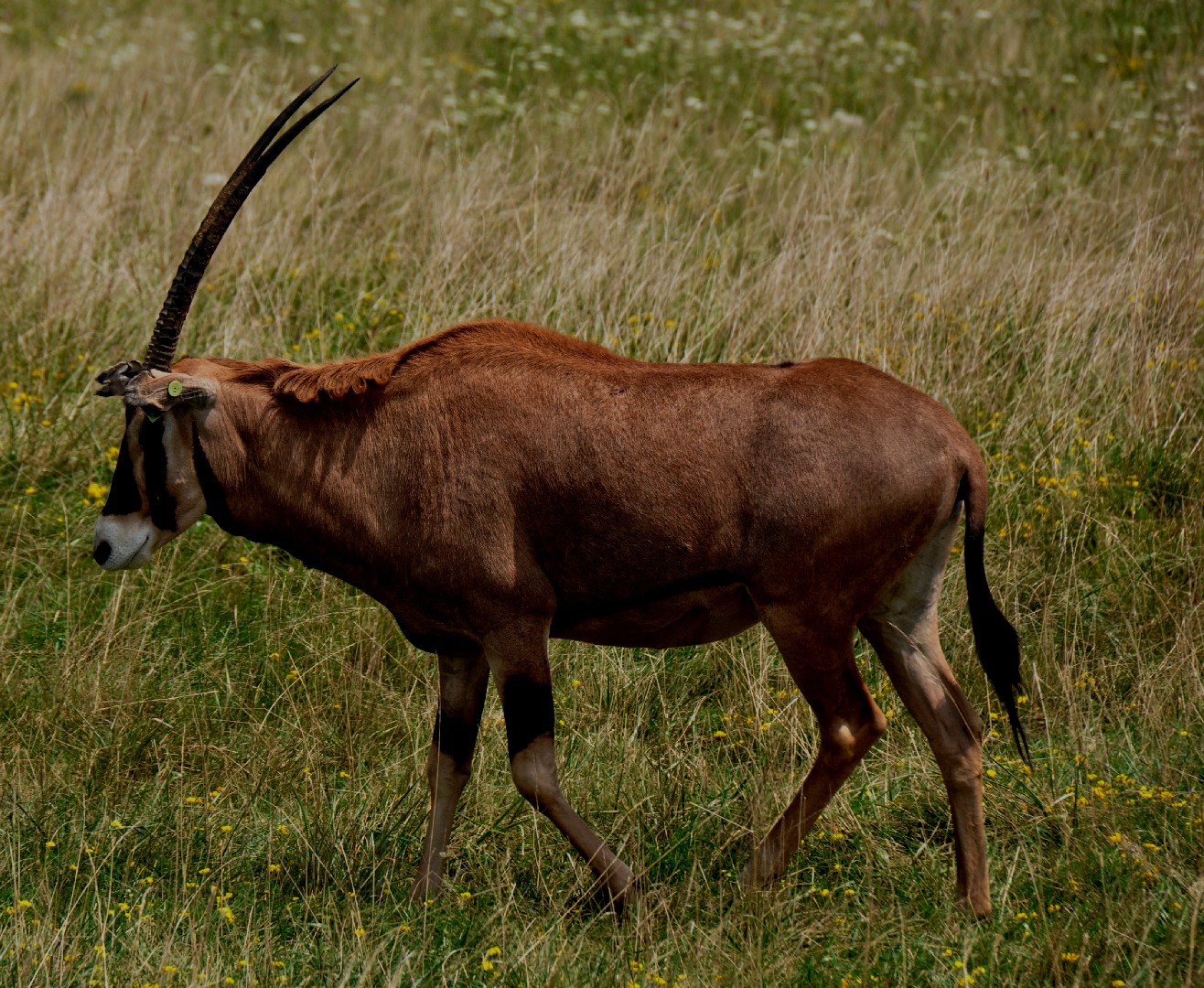East african oryx
A species of Oryxes, Also known as Fringe-eared oryx Scientific name : Oryx beisa Genus : Oryxes
East african oryx, A species of Oryxes
Also known as:
Fringe-eared oryx
Scientific name: Oryx beisa
Genus: Oryxes
Content
Description General Info
 , used under CC-BY-SA-2.0 /Cropped and compressed from original
, used under CC-BY-SA-2.0 /Cropped and compressed from original Description
The East African oryx stands just over a metre at the shoulder and weighs around 175 lb (79 kg). It has a grey coat with a white underside, separated from the grey by a stripe of black, with black stripes where the head attaches to the neck, along the nose, and from the eye to the mouth and on the forehead. The mane is small and chestnut-coloured; the ringed horns are thin and straight. They are found on both sexes and typically measure 75–80 cm (30–31 in). Comparably, the gemsbok has an entirely black tail, a black patch at the base of the tail, and more black on the legs (including a patch on the hindlegs) and lower flanks. The smaller Arabian oryx is overall whiter with largely dark legs. East African oryx live in semidesert and steppes, where they eat grasses, leaves, fruit and buds. They are able to store water by raising their body temperatures (so as to avoid perspiration). They gather in herds of five to 40 animals, often with females moving at the front and a large male guarding from the rear. Some older males are solitary. Radio tracking studies show the solitary males are often accompanied for brief periods by breeding-condition females, so it is probable they are executing a strategy to maximise their chances of reproduction. 
General Info
Lifespan
18-20 years
Diet
East african oryx primarily thrive on eating a variety of vegetation. Their adaptive nature helps them consume grass, leaves, herbs, and fruits, all while enduring drought-like conditions. They particularly favor Sansevieria ehrenbergii and Acacia roots during such arid scenarios.
Appearance
The Oryx beisa is a large antelope with a lean, muscular physique, a stately stand, and a dense, coarse fur. Its coloration includes bright white undersides, a gray-brown main body, and distinctive black markings on the face and flanks. A pair of long, straight horns, present in both sexes, dominates its profile. Subspecies vary subtly in color intensity and horn curvature.
Behavior
East african oryx displays diurnal, social behavior, forming herds of 5-40 members. It uses its sharp, long horns in territorial fights and for defense against predators. The species is adapted to arid environments, obtaining water from the vegetation it feeds on, making it capable of surviving long periods without direct water sources.
Population
Decreasing